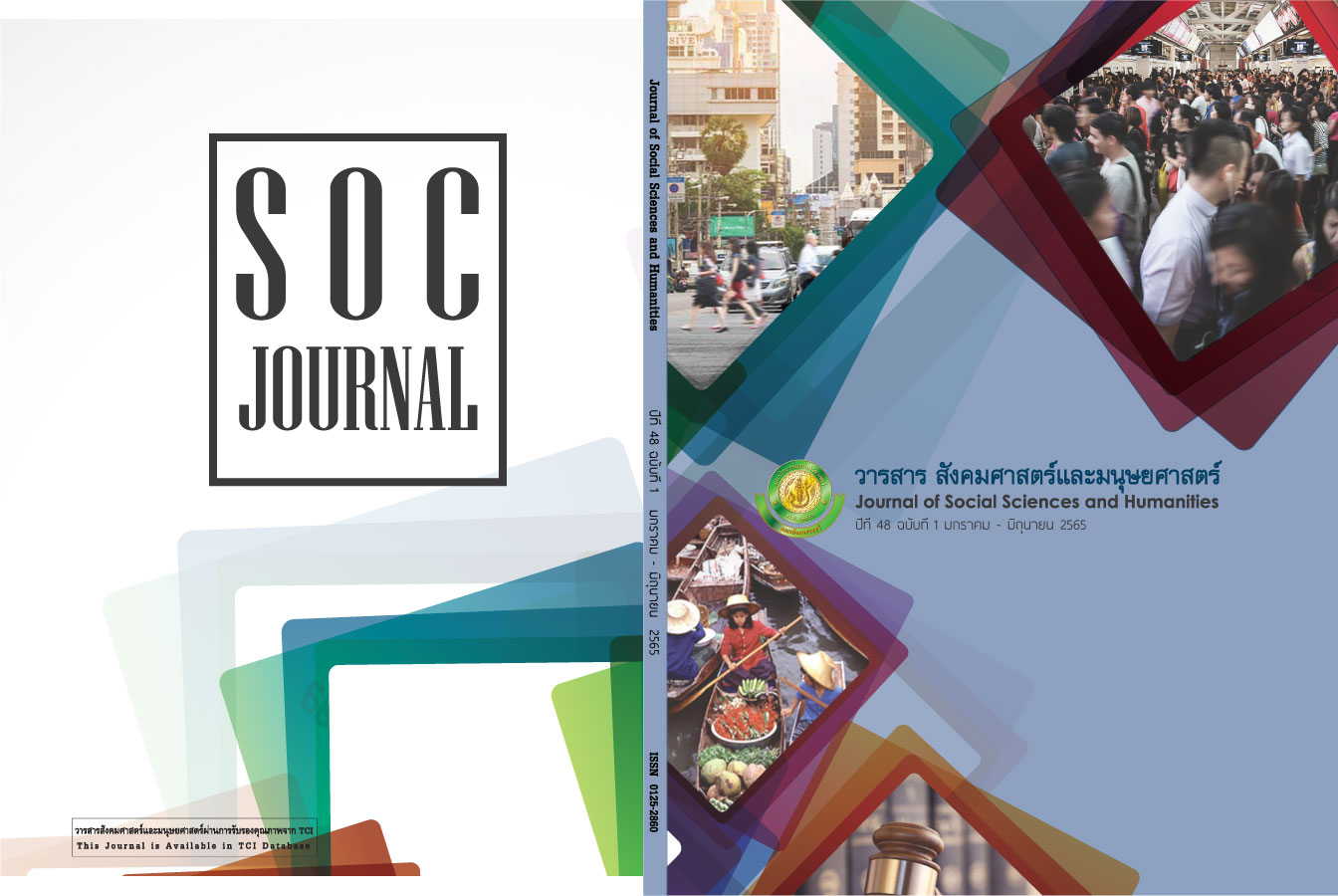The Correlation between Use of Smartphone and Family Relationship in Uthaimai Subdistrict, Muang Uthaithani District, Uthaithani Province
Main Article Content
Abstract
The quantitative research aimed to study the correlation between the use of smartphone and family relationship in Uthaimai Subdistrict, Muang Uthai Thani District, Uthai Thani Province. Questionnaires were used to collect data from 400 households and multiple regression analysis was used for data analyses. The study discovered the use of smartphones was associated with family relationships. The average number of smartphones per household was 3, each person in the household had one. Most the household members often use a smartphone during household activities (46%). The average use of smartphone per day per person was 3.18 hours. In terms of family relationships, If the household had an additional number of smartphones, the household would have a 1.9 increase in the family relationship score (β=1.867, p-value= 0.008). If one more person in the household using Facebook, households will have a 0.8 increase in the family relationship score (β=0.751, p-value= 0.045). On the other hand, if each person in a household used an additional one hour of smartphones, the household would have a 0.5 score drop in family relationships (β= -0.539, p-value= 0.049). Therefore, in addition to the benefits of entertainment smartphones can also be used to communicate with household members via Facebook messages to strengthen family relationships. Household members should have an appropriate time allocation for using their smartphones, while they are together.
Article Details

This work is licensed under a Creative Commons Attribution-NonCommercial-NoDerivatives 4.0 International License.
References
ธัญญามาศ สังข์นาค และสุภาภรณ์คำเรืองฤทธิ์. (2564). ความสัมพันธ์ระหว่างสัมพันธภาพและการเลี้ยงดูของครอบครัวกับการติดสมาร์ทโฟนของนักเรียนระดับชั้นมัธยมศึกษา. วารสารศรีนครินทรวิโรฒวิจัยและพัฒนา (สาขามนุษย์ศาสตร์และสังคมศาสตร์), 13(25), 49-60.
นวลฉวี ประเสริฐสุข. (2558). สื่อสารอย่างสร้างสรรค์เพื่อสร้างสุขในครอบครัว. Veridian E-Journal, Slipakorn University, 8(2), 737-747.
น้ำทิพย์ วิภาวิน. (2558). เครือข่ายสังคมในสังคมเครือข่าย. วารสารวิจัยสมาคมห้องสมุดฯ, 8(2), 120-127.
ภัทริกา วงศ์อนันต์นนท์. (2557). พฤติกรรมการใช้อินเทอร์เน็ตของเด็กและเยาวชน. วารสารพยาบาลทหารบก, 15(2), 173-178.
วนัญญา แก้วแก้วปาน. (2560). สัมพันธภาพครอบครัวกับปัญหาการกระทำความผิดในวัยรุ่น. Veridian E-Journal, Silpakorn University, 10(1), 361-371.
ศักดิกร สุวรรณเจริญ, สุพัตรา ธรรมาอินทร์, สุวัฒนา เกิดม่วง, อังค์ริสา พินิจจันทร์ และพรเลิศ ชุมชัย. (2562). พฤติกรรมและผลกระทบจากการใช้สมาร์ทโฟนของนักเรียนมัธยมศึกษาตอนปลาย จังหวัดนนทบุรี. วารสารพยาบาลกระทรวงสาธารณสุข, 29(3), 107-117.
ศิริกุล อิศรานุรักษ์. (2542). หลักการวางแผนงานอนามัยครอบครัว. กรุงเทพฯ: เจริญดีการพิมพ์.
สำนักงานสถิติแห่งชาติ กระทรวงดิจิทัลเพื่อเศรษฐกิจและสังคม. (2564). สำรวจการมีการใช้เทคโนโลยีสารสนเทศและการสื่อสารในครัวเรือน พ.ศ.2563. กรุงเทพฯ: สำนักงานสถิติแห่งชาติ.
อภิสิทธิ์ นาคอ่อน และสุภาภรณ์ คาเรืองฤทธิ์. (2563). ปัจจัยที่มีความสัมพันธ์กับการติดเกมของนักเรียนชั้นประถมศึกษาปีที่ 4-6.
วารสารสังคมศาสตร์และมนุษยศาสตร์, 46(2), 111-141.
Healthy Gamer. (2558). บทวิเคราะห์งานวิจัยสถานการณ์เด็กติดเกม มิถุนายน 2557. สืบค้นจาก www1.si.mahidol.ac.th/Healtygamer/download/academic/64135.
Parent one. (2020). พฤติกรรมของพ่อแม่ที่ทำให้หนูน้อยติดสมาร์ทโฟน. สืบค้นจาก www.parentsone.com/zbehavior-of-parents-makes-childs-stick-smart-phone/.
Burns, J. (2017). Parents' mobile use harms family life, say secondary pupils. Retrieved from www.bbc.com/news/education-39666863.
Dijk, J.V. (2006). The network society. London: SAGE.
Daatland, S. O., & Herlofson, K. (2001). Ageing, intergenerational relation, care systems and quality of life – an introduction to the OASIS project. Oslo: Oslo Metropolitan University.
McChesney, K. Y., & Bengtson, V. L. (1988). Solidarity, intergenerational relations and cohesion in families: Concept and theories. Washington, DC.: American Psychological Association.
Wellman, B., Smith, A., Wells, A, & Kennedy, T. (2008). Networked Families. Retrieved from http://www.pewinternet.org/~/media/ Files/Reports/2008/PIP_Networked_Family.pdf.

